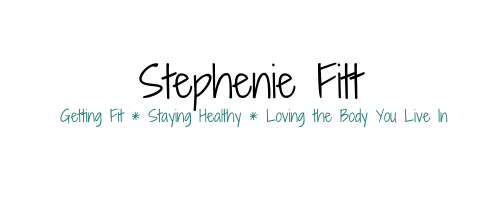My latest assignment for my Master’s in Holistic Nutrition was to write a paper about a disorder of the endocrine system. I chose Hypothyroidism, as it ranks up there as one of the most prevalent chronic disorders people experience. If you’d like to nerd out with me, continue reading:
Hypothyroidism is defined as a deficiency of thyroid hormone (Pizzorno & Murray, 2013, p.1473), and is due to one of three factors: insufficient hormone synthesis, a lack of stimulation by the pituitary gland, and/or impaired conversion of thyroxine (T4) to triiodothyronine (T3) (Pizzorno & Murray, 2013, p. 1473; Rakel, 2018, p. 347). Many factors contribute to hypothyroidism, including nutrient deficiencies, environmental toxins and endocrine disruption, estrogen dominance, infections, food intolerances and food allergies, poor liver function, and chronic stress (Kohlstadt, 2012, p. 391, 398; Myers, 2019; Rakel, 2018, p. 348-350).
In primary hypothyroidism, iodine deficiency is the most common cause due to lack of dietary iodine intake in certain regions of the world, with autoimmune destruction of the thyroid gland (Hashimoto’s Disease) most common in iodine-sufficient regions (Rakel, 2018, p. 347). Other factors contributing to primary hypothyroidism include surgery to thyroid, radioactive iodine administration, certain medications, overconsumption of goitrogens, and external beam radiation (Rakel, 2018, p. 347). Low thyroid hormone levels and high thyroid-stimulating hormone (TSH) levels from the pituitary gland indicate defective thyroid hormone synthesis (Pizzorno & Murray, 2013, p. 1473).
Secondary hypothyroidism, on the other hand, is indicated by decreased levels of both TSH and thyroid hormones (Pizzorno & Murray, 2013, p.1473). This occurs most commonly due to pituitary tumors, pituitary surgery, or disease of the pituitary gland (Rakel, 2018, p. 347). Finally, tertiary hypothyroidism is defined by a deficit of thyroid hormone-releasing hormone (THRH) from the hypothalamus (Pizzorno & Murray, 2013, p. 1473), and may be due to infection, congenital defect, or infiltrative processes of the brain (Rakel, 2018, p. 347). Subclinical hypothyroidism is indicated by elevated TSH but normal levels of T4, and may be asymptomatic, but may lead to primary hypothyroidism over time (Rakel, 2018, p. 347).
Hypothyroidism, regardless of its etiology, affects women more than men, and whites and Mexican-Americans more than African-Americans (Kohlstadt, 2012, p. 391; Pizzorno & Murray, 2013, p. 1473). It is estimated that the rate of hypothyroidism is somewhere near 25% of the adult population, with incidences significantly higher among the elderly (Pizzorno & Murray, 2013, p. 1473).
Symptoms of hypothyroidism can mimic other diseases making it challenging to identify and diagnose (Kohlstadt, 2012, p. 392). Mild fatigue or depression may go on for years and precede any clinical serum abnormalities, therefore a careful analysis of both symptoms and lab test results are crucial to diagnosis (Kohlstadt, 2012, p. 393; Pizzorno & Murray, 2013, p. 1474). Chronic fatigue, depression, malaise, difficulty concentrating, forgetfulness, weight gain, sensitivity to cold (especially in the hands and feet), edema, decreased libido, menstrual abnormalities, infertility, dry skin, hair loss, thinning eyebrows, thin, brittle nails, muscle weakness, joint stiffness, gastroesophageal reflux disease (GERD), shortness of breath, constipation, delayed tendon reflex, loss of hearing, and atherosclerosis are all possible presentations in hypothyroidism (Kohlstadt, 2012, p. 393; Pizzorno & Murray, 2013, p. 1474; Rakel, 2018, p. 348).
Allopathic approaches to treatment of hypothyroidism rely primarily on serum lab testing of TSH and sometimes T4 (Mayo Clinic, 2018). Traditionally the accepted as normal range for TSH is quite broad, measuring 0.35-5.50 mIU/mL, with some conventional practitioners using levels greater than 10 mIU/mL as a basis for recommending treatment (National Academy of Hypothyroidism, 2012; Pizzorno & Murray, 2013, p. 1476). Additional labs such as cholesterol and triglyceride measures as well as clinical presentation of the patient may also be taken into account. If lab results indicate low TSH, a pharmaceutical is prescribed, most often the synthetic T4 thyroxin (levothyroxine sodium), with the most common brand names of Levoxyl (levothyroxine) and Synthroid (Lee & Hopkins, n.d.; National Academy of Hypothyroidism, 2017). It is interesting to note that thyroid hormone-replacement drugs are ranked the third most common prescribed in the United States (National Academy of Hypothyroidism, 2017). Rarely are nutrition, lifestyle, gut integrity, and stress addressed in allopathic care of hypothyroidism, with the focus almost solely on pharmaceutical intervention (National Academy of Hypothyroidism, 2012). Typically, once stabilized within normal range, TSH levels are monitored yearly and dosages adjusted as needed (Mayo Clinic, 2018).
Integrative approaches to healing hypothyroidism are more holistic in approach, taking into account not only lab tests of thyroid hormones but also nutrition, stress levels, lifestyle choices, sex hormone levels and blood sugar regulation. A comprehensive evaluation, including labs, medical history, symptomatology, and lifestyle choices recognize that hypothyroidism is a multi-faceted disorder with often more than one overt cause (Kohlstadt, 2018, p.392).
Comprehensive thyroid labs test not only for TSH, but for T4, free T4, T3, free T3, and reverse T3 (rT3) (Pizzorno & Murray, 2013, p. 1474; Rakel, 2018, p. 348). Cholesterol, triglyceride, cortisol, homocysteine, and C-reactive protein (CRP) levels may also be tested, and if elevated, indicate possible hypothyroidism (Pizzorno & Murray, 2013, p. 1474). Low iron and B12 are also indicators of thyroid insufficiency (Pizzorno & Murray, 2013, p. 1474). Supplementation is recommended based on lab results, with brand name Armour Thyroid most commonly prescribed in functional medicine. Combination via dessicated pig or cow thyroid (also called USP thyroid) provides both T3 and T4 support in approximately the ratio made by the human thyroid (Lee & Hopkins, n.d.; National Academy of Hypothyroidism, 2017) as opposed to only TSH replacement. In addition to labs and to further support a hypothyroid diagnosis, a Basal Body Temperature test may be done to measure for lowered body temperature, while the Iodine patch test demonstrates iodine uptake and therefore the body’s need for iodine (Weatherby & Ferguson, 2005, p. 17-23).
Environmental toxins play a role in thyroid health. Heavy metals compete for thyroid hormone, iodine, and selenium uptake in the thyroid, so testing for mercury, lead, and cadmium by way of urine provocation test would be indicated (Kresser, 2019; Pizzzorno & Murray, 2013, p. 194-195). The halides, including fluoride, bromide, and chloride bind with iodine receptors in the thyroid gland (Fluoride, Bromide, Chloride, and Thyroid Health, 2018). A 24-hour urine iodine test may be ordered to check for possible iodine deficiency and levels of halides (Fluoride, Bromide, Chloride, and Thyroid Health, 2018; Kohlstadt, 2012, p.396). Measures to decrease exposure to these chemicals are encouraged.
Gut dysbiosis and increased intestinal permeability both interfere with iodine, selenium, and other mineral absorption (Kohlstadt, 2012, p. 394). A Comprehensive Digestive Stool Analysis for dysbiosis, Organix test to measure protein digestion, and a lactulose-mannitol test to measure intestinal permeability may all be utilized (Rakel, 2018, p. 580). Selenium- , zinc-, and iodine-rich foods and/or supplementation may be recommended to ensure proper uptake (Kresser, 2019).
Lifestyle, and particularly stress plays an enormous role in thyroid health, as excess cortisol inhibits thyroid hormone metabolism (Kohlstadt, 2012, p. 401; National Academy of Hypothyroidism, 2017). An adrenal stress profile using salivary collection will provide clues to cortisol levels (Kohlstadt, 2012, p. 401). Meditation, low-intensity exercise, breathwork, and body work may all be recommended to support thyroid health, even if cortisol levels are within normal range (Rakel, 2018, p. 358-359). Blood glucose levels may be checked and measures taken to balance insulin levels and reduce inflammation through diet and exercise (Wentz, 2019). Encouraging proper sleep hygiene and maintaining a healthy body weight are regarded as positive practice as well (Rakel, 2018, p. 590).
Estrogen dominance and/or progesterone deficiency also play a big role in hypothyroidism. An imbalance of these female sex hormones not only produce symptoms mimicking hypothyroidism, but increase serum thyroid binding globulin (TBG), rendering thyroid hormones inactive (Myers, 2019). A 6- or 24-hour saliva or urine collection to measure estrogen levels may be ordered to determine a course of action. Balancing estrogen-dominance calls for a multi-faceted approach, including decreasing stress and inflammation, minimizing exposure to xenoestrogens and hormone disruptors, reducing exposure to heavy metals, and eating organic and minimally-processed whole foods (Myers, 2019; National Academy of Hypothyroidism, 2017).
Nutrient-rich foods are encouraged to support optimal thyroid health, regardless of lab results. Iodine-rich foods such as sea vegetables, ocean fish, and unrefined sea salt support iodine levels (Fluoride, Bromide, Chloride, and Thyroid Health, 2018; Kohlstadt, 2012, p. 394). Cooking raw goitrogens (cruciferous or Brassica vegetables, including cabbage, turnips, Brussels sprouts, broccoli, cauliflower, bok choy, etc.) before consuming or avoiding altogether is recommended (Kohlstadt, 2012, p. 394-395), as goitrogens compete for iodine uptake and block incorporation into the thyroglobulin molecule (Kohlstadt, 2012, p. 394-395. Minimizing the effect of thyroid peroxidase enzyme-inhibiting (TPO-inhibiting) soy isoflavones by consuming fermented soy is encouraged (Kohlstadt, 2012, p. 395). Increasing intake of zinc-rich foods (seafood, oysters, red meats, and organ meats), heme iron (chicken liver, oysters, beef liver, beef, turkey, and chicken), selenium (Brazil nuts, grass-fed meat, eggs, ans seafood), and copper (organ meats, eggs, yeast, beans, nuts, and seeds) are also extremely supportive to the thyroid (Kohlstadt, 2012, p. 393-398). Finally, daily exposure to sunshine or vitamin D supplementation, and vitamin A, C, E, copper, the B vitamins, and trace mineral supplementation may also be indicated to optimize thyroid hormone production and uptake (Pizzorno & Murray, 2013, p. 1479).
Regardless of etiology, hypothyroidism can be managed through lab testing and hormone supplementation. A holistic approach provides additional support with nutritional supplementation, a nutrient-dense diet, exercise, and lifestyle modifications.
References
Fluoride, Bromide, Chloride and Thyroid Health. (2018, January 2). Retrieved November 26, 2019, from https://www.naturalendocrinesolutions.com/articles/fluoride-bromide-chloride-and-thyroid-health/.
Kohlstadt, I. (2012). Advancing Medicine with Food and Nutrients, Second Edition. Hoboken: Taylor and Francis.
Kresser, C. (2019, October 10). How Environmental Toxins Harm the Thyroid. Retrieved November 25, 2019, from https://kresserinstitute.com/environmental-toxins-harm-thyroid/.
Lee, J. R., & Hopkins, V. (n.d.). What Your Dr May Not Tell You About Your Thyroid. Retrieved November 24, 2019, from https://www.virginiahopkinstestkits.com/thyroidarticle.html.
Myers, A. (2019, November 14). 9 Causes of Estrogen Dominance and What to Do About It. Retrieved November 24, 2019, from https://www.amymyersmd.com/2019/03/9-causes-estrogen-dominance/.
Mayo Clinic. (2018, December 4). Hypothyroidism (underactive thyroid). Retrieved November 24, 2019, from https://www.mayoclinic.org/diseases-conditions/hypothyroidism/diagnosis-treatment/drc-20350289.
National Academy of Hypothyroidism. (2012, January 27). Why Doesn't My Endocrinologist Know All of This? Retrieved November 24, 2019, from https://www.nahypothyroidism.org/why-doesnt-my-doctor-know-all-of-this/.
National Academy of Hypothyroidism. (2017, September 13). Estrogen Dominance and Hypothyroidism: National Academy of Hypo. Retrieved November 24, 2019, from https://www.nahypothyroidism.org/estrogen-dominance-and-hypothyroidism-is-it-hypothyroidism-or-hormone-imbalance/.
Pizzorno, J. E. (2013). Textbook of natural medicine. St. Louis, MO: Elsevier/Saunders.
Rakel, D. (2018). Integrative medicine. Philadelphia, PA: Elsevier.
Weatherby, D., & Ferguson, S. (2005). The complete practitioners guide to take-home testing: tools for gathering more valuable patient data. Ashland, OR.: Emperors Group.
Wentz, I. (2019, March 14). Why Balancing Blood Sugar is Vital for Hashimotos Help. Retrieved November 26, 2019, from https://thyroidpharmacist.com/articles/blood-sugar-imbalances-and-hashimotos/




